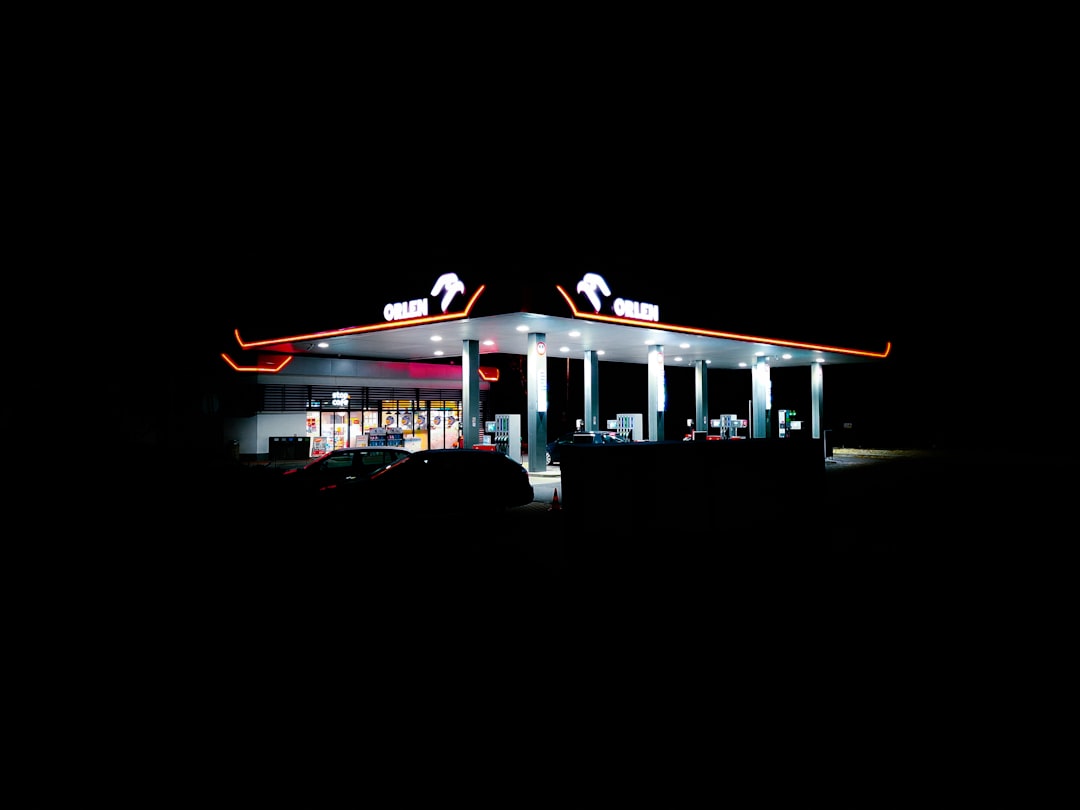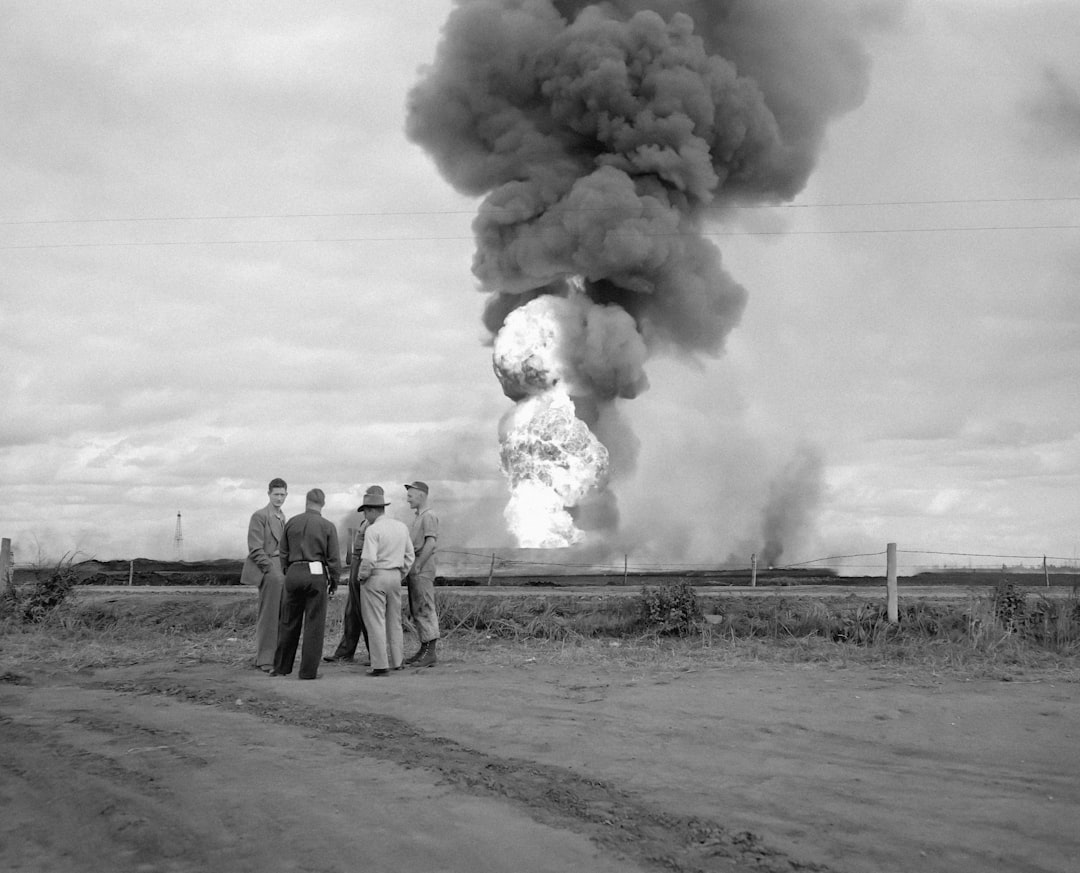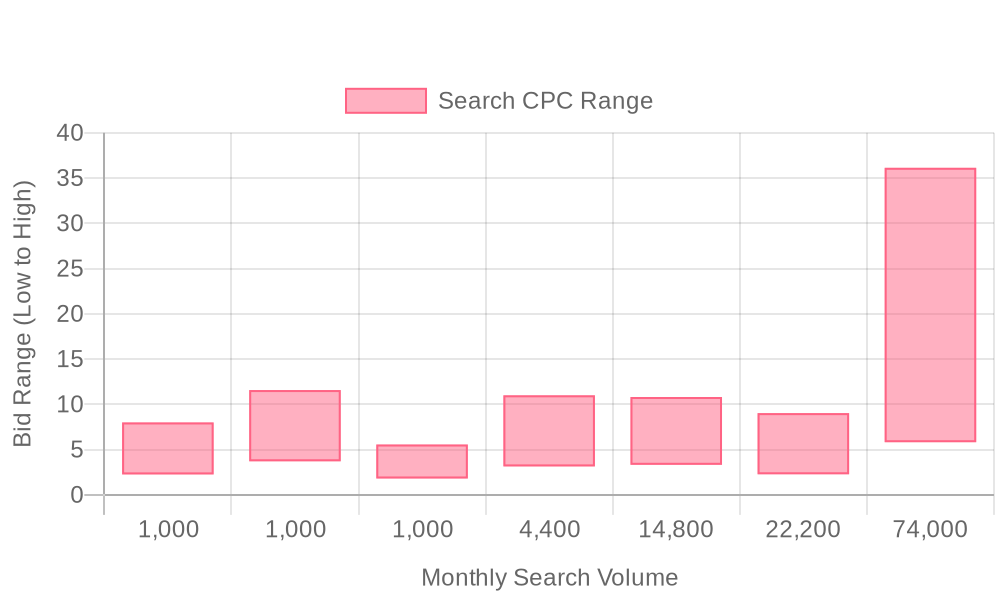
Supercharge your lead generation with a FREE Google Ads audit - no strings attached! See how you can generate more and higher quality leads
Get My Free Google Ads AuditFree consultation

No commitment
Supercharge your lead generation with a FREE LinkedIn Ads audit - no strings attached! See how you can generate more and higher quality leads
Get My Free Google Ads AuditFree consultation

No commitment
Supercharge your lead generation with a FREE Meta Ads audit - no strings attached! See how you can generate more and higher quality leads
Get My Free Google Ads AuditGet My Free LinkedIn Ads AuditGet My Free Meta Ads AuditFree consultation

No commitment
Supercharge your lead generation with a FREE Google Ads audit - no strings attached! See how you can generate more and higher quality leads
Get My Free Google Ads AuditFree consultation

No commitment
In an evolving digital landscape, petroleum companies face the challenge of reaching decision-makers in a niche market. With growing scrutiny on environmental practices and a shift towards digital-first marketing strategies, Google Ads for the petroleum industry presents unique opportunities for strategic targeting and measurable outcomes. The ability to capture high-intent searches in real-time allows companies to impact their audience precisely when they're searching for solutions. This capability is particularly valuable in complex B2B environments, where identifying genuine decision-makers is crucial. Advanced tools can help bridge the gap between anonymous site visitors and high-value contacts, ensuring ad spend targets actual decision-makers. Thus, Google Ads emerges as an indispensable tool in the petroleum industry's marketing arsenal.

Maximizing lead generation in the petroleum industry through Google Ads requires a strategy rooted in precise data, audience insight, and campaign flexibility. B2B marketers in oil and gas who leverage advanced targeting and real-time data consistently outperform those using static, broad-based approaches.
A methodical framework ensures each campaign step—from keyword selection to conversion tracking—directly impacts ROI and pipeline growth. By aligning ad creative, audience segments, and attribution models, revenue teams establish a closed-loop system that captures, qualifies, and nurtures high-value leads throughout complex sales cycles.

Petroleum companies secure meaningful business outcomes by targeting high-intent audiences when procurement teams and decision-makers actively search for products and services. Digital campaigns make it possible to identify these opportunities at scale, even when buyers begin their journey anonymously, unlocking new revenue streams that traditional sales teams may never reach.
Brand reach now extends far beyond static billboards or trade publication placements. With digital advertising for oil companies, marketing teams can reinforce corporate messaging, educate the market about new products, and manage the narrative on environmental issues. Learn how PPC boosts engagement for oil and gas brands.
ROI optimization is a critical priority in oil and gas advertising. Digital channels allow marketers to track every interaction, measure conversion rates, and quickly reallocate spend to the top-performing campaigns. For more on maximizing advertising efficiency, see our guide on Boosting Google Ads ROAS.
Greenwashing concerns have become central to environmental advertising in the petroleum sector. Google Ads strategies now require careful orchestration of messaging to transparently showcase sustainability initiatives while maintaining compliance and brand integrity. Coordinating consistent, cross-channel communications helps companies proactively address public scrutiny, build trust, and differentiate themselves in a crowded, highly regulated landscape.

Petroleum marketers are seeing a rapid evolution in how digital advertising drives measurable growth. By leveraging Google Ads, teams can pinpoint high-value buyers, differentiate their offerings, and accelerate lead generation in a sector where decision cycles are complex and stakes are high. Modern revenue teams in oil and gas benefit from unified, actionable data that eliminates guesswork and ensures every dollar spent is strategically aligned with sales outcomes.
By uniting data from search, display, video, and remarketing efforts, petroleum industry marketers can create a seamless, data-driven strategy that targets, engages, and converts high-value prospects while protecting brand reputation in a highly scrutinized sector.

Marketing leaders in the petroleum industry gain a decisive edge by uncovering untapped channels and granular audience segments. Strategic expansion means connecting with buyers across new digital touchpoints, all while aligning messaging with evolving priorities around sustainability and transparency.
Ready to identify new opportunities for growth? Get started today.

Sophisticated audience segmentation in the petroleum industry empowers revenue teams to maximize campaign precision and marketing ROI. By aligning messaging with the unique motivations of each buyer group, companies in this sector attract higher-value opportunities and optimize their digital advertising budgets.

| Industry | Keyword | Monthly Search Volume | Competition Level | Low Bid | High Bid |
| Petroleum Industry | petroleum industry | 1000 | LOW | 2.26 | 8 |
| Petroleum Industry | oil and gas investment | 1000 | MEDIUM | 3.71 | 11.58 |
| Petroleum Industry | oil companies to invest in | 1000 | MEDIUM | 1.81 | 5.56 |
| Petroleum Industry | oil and gas companies | 4400 | LOW | 3.15 | 11 |
| Petroleum Industry | oil companies | 14800 | LOW | 3.32 | 10.81 |
| Petroleum Industry | petroleum engineering | 22200 | LOW | 2.28 | 9.03 |
| Petroleum Industry | petroleum | 74000 | LOW | 5.82 | 36.13 |
Effective keyword strategy is the cornerstone of high-performing google ads for petroleum industry campaigns. Success hinges on identifying not just the most obvious search terms, but also the nuanced language buyers use throughout the decision-making process. By leveraging real-time intent data and advanced analytics, marketers can pinpoint which keywords indicate prospects who are ready to engage or transact, ensuring every ad dollar targets valuable demand.
Insights from unified digital advertising data allow for ongoing optimization of keyword portfolios. For more insights on maximizing paid search outcomes, check out our guide on Google Ads ROAS. Teams can analyze which terms consistently attract in-market buyers, then automatically sync refined audience segments and lead lists into advertising platforms. This closed-loop approach ensures that targeting evolves alongside shifting market dynamics, maximizing the impact of every search engine marketing dollar in petroleum marketing and fossil fuel advertising.
Success in google ads for petroleum industry begins with highly curated keyword lists that reflect the language, services, and regulatory context unique to petroleum marketing. Focused keyword research should emphasize industry-specific terms, such as “oilfield equipment suppliers,” “bulk fuel delivery,” or “diesel wholesaler,” along with geographic qualifiers for local relevance. Oil & Gas Keywords provides a deeper look at this trend, offering examples of high-performing terms for oil and gas advertisers.
Leveraging behavioral data and first-party insights allows marketers to go beyond generic search volume, ensuring that each keyword is mapped to actual in-market intent. When platforms connect visitor intelligence to ad targeting, teams can identify not just what prospects are searching but also the companies behind those queries, sharpening budget allocation toward high-value segments.
Effective ad copy for petroleum and fossil fuel advertising addresses both the operational needs of B2B buyers and the heightened scrutiny around environmental advertising. Messaging should highlight measurable benefits—such as compliance with environmental standards, efficiency improvements, or cost savings—while directly countering objections related to sustainability or greenwashing. Greenwashing in Google Ads explores how oil companies have adapted messaging in response to public pressure on greenwashing.
Marketers equipped with real-time intent data can tailor messaging dynamically, updating ad text to reflect shifting industry narratives or sudden changes in regulations. This approach ensures every impression is purposeful, timely, and relevant to the decision-maker’s stage in the funnel.
Optimized landing pages are essential for converting ad clicks into leads, especially in digital advertising for oil companies where the buyer journey is complex. Each landing page must mirror the promise of its corresponding ad, featuring sector-specific case studies, certifications, and clear calls to action. Integrating advanced visitor identification capabilities enables teams to personalize content or form fields in real time, reducing friction for repeat visitors or high-value accounts. Solutions such as Sona Visitor ID support real-time visitor recognition, enabling more tailored landing page experiences.
With analytics synched across the funnel, marketers gain full visibility into which pages drive engagement and which need refinement, supporting a continuous improvement cycle.
Sustained performance in PPC for petroleum industry demands rigorous, ongoing optimization anchored in deep analytics. Regular reviews of conversion data, search term reports, and audience movement uncover actionable insights for bid adjustments, negative keyword expansion, or creative refreshes. As discussed in our Boost Google Ads ROAS guide, advanced attribution and optimization strategies can drive measurable improvements in campaign performance.
When ad platforms are unified with CRM and offline conversion tracking, marketers can attribute results not just to clicks but to actual revenue outcomes, closing the loop between digital influence and business growth. Automated audience updates, triggered by lead progression or intent spikes, help ensure that spend is always focused on the accounts most likely to convert, further improving ROI for oil and gas advertising efforts.
The petroleum industry’s advertising landscape is evolving, and Google Ads offers a powerful way to reach targeted audiences while navigating unique challenges like ethical scrutiny and shifting consumer expectations.
From optimizing ad spend to balancing transparency with competitive messaging, petroleum companies must leverage data-driven strategies to stay ahead. By focusing on precise targeting, measurable results, and authentic storytelling, you can turn Google Ads into a tool for both growth and trust-building.
Imagine transforming your campaigns into high-performing assets that not only drive leads but also align with modern expectations for accountability—without sacrificing ROI. The right approach can turn skepticism into engagement and clicks into conversions.
Ready to see how data-driven advertising can elevate your strategy? Start a free trial to experience the platform and its capabilities.
Petroleum companies use Google Ads for strategic targeting, capturing high-intent searches, and employing data-driven targeting with industry-specific keywords to reach decision-makers in niche markets.
Fossil fuel companies use Google Ads to manage narratives on environmental issues, showcasing sustainability initiatives and maintaining compliance to build trust and differentiate themselves from competitors.
Greenwashing in petroleum advertising involves misleading messaging that portrays a company as more environmentally friendly than it is, which Google Ads strategies aim to address transparently.
The ethical implications include managing truthful messaging regarding sustainability initiatives and balancing corporate interests with public scrutiny over environmental concerns.
Google Ads are highly effective for petroleum businesses as they allow precise targeting, real-time intent tracking, and measurable outcomes, enhancing lead generation and brand reach.
Join results-focused teams combining Sona Platform automation with advanced Google Ads strategies to scale lead generation

Connect your existing CRM

Free Account Enrichment

No setup fees
No commitment required

Free consultation

Get a custom Google Ads roadmap for your business
Join results-focused teams combining Sona Platform automation with advanced Meta Ads strategies to scale lead generation

Connect your existing CRM

Free Account Enrichment

No setup fees
No commitment required

Free consultation

Get a custom Google Ads roadmap for your business
Join results-focused teams combining Sona Platform automation with advanced LinkedIn Ads strategies to scale lead generation

Connect your existing CRM

Free Account Enrichment

No setup fees
No commitment required

Free consultation

Get a custom Google Ads roadmap for your business
Join results-focused teams using Sona Platform automation to activate unified sales and marketing data, maximize ROI on marketing investments, and drive measurable growth

Connect your existing CRM

Free Account Enrichment

No setup fees
No commitment required

Free consultation

Get a custom Google Ads roadmap for your business
Over 500+ auto detailing businesses trust our platform to grow their revenue
Join results-focused teams using Sona Platform automation to activate unified sales and marketing data, maximize ROI on marketing investments, and drive measurable growth

Connect your existing CRM

Free Account Enrichment

No setup fees
No commitment required

Free consultation

Get a custom Google Ads roadmap for your business
Over 500+ auto detailing businesses trust our platform to grow their revenue
Join results-focused teams using Sona Platform automation to activate unified sales and marketing data, maximize ROI on marketing investments, and drive measurable growth

Connect your existing CRM

Free Account Enrichment

No setup fees
No commitment required

Free consultation

Get a custom Google Ads roadmap for your business
Over 500+ auto detailing businesses trust our platform to grow their revenue
Our team of experts can implement your Google Ads campaigns, then show you how Sona helps you manage exceptional campaign performance and sales.
Schedule your FREE 15-minute strategy sessionOur team of experts can implement your Meta Ads campaigns, then show you how Sona helps you manage exceptional campaign performance and sales.
Schedule your FREE 15-minute strategy sessionOur team of experts can implement your LinkedIn Ads campaigns, then show you how Sona helps you manage exceptional campaign performance and sales.
Schedule your FREE 15-minute strategy sessionOur team of experts can help improve your demand generation strategy, and can show you how advanced attribution and data activation can help you realize more opportunities and improve sales performance.
Schedule your FREE 30-minute strategy sessionOur team of experts can help improve your demand generation strategy, and can show you how advanced attribution and data activation can help you realize more opportunities and improve sales performance.
Schedule your FREE 30-minute strategy sessionOur team of experts can help improve your demand generation strategy, and can show you how advanced attribution and data activation can help you realize more opportunities and improve sales performance.
Schedule your FREE 30-minute strategy sessionOur team of experts can help improve your demand generation strategy, and can show you how advanced attribution and data activation can help you realize more opportunities and improve sales performance.
Schedule your FREE 30-minute strategy session





Launch campaigns that generate qualified leads in 30 days or less.
